Old Man Yip: Photography Master in Slippers
Yip Cheong Fun was one Singapore’s most eminent photographers. His ability to capture, “the decisive moment” made him unique among the photographers of his generation.
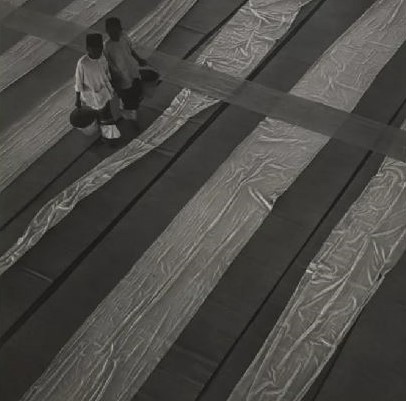
Life in Chinatown
Nothing in Yip Cheong Fun’s early life suggests that he would become one of Singapore’s most eminent photographers. He was born in Hong Kong in 1903, the son of a farmer. At the age of 7 months, his parents left Hong Kong for Singapore where he remained till 1909. His father died in 1907 and his mother, unable to cope with having to eke out a modest living and caring for her children, sent him back to China to be placed in the care of relatives. Unfortunately, his relatives neglected him and he returned to Singapore in 1913 after his relatives’ neighbours alerted his mother to his plight. From then on, he stayed with his mother at 47 Kreta Ayer Street. This would be his home for the rest of his life.

Yip had a basic Chinese education in a private school in Chinatown. He was mechanically-inclined and apprenticed in an engineering firm where he picked up a number of technical skills that stood him in good stead over the years. After school, he worked for United Engineers as a supervisor but quit the firm in 1942 after discovering that it was making munitions for the Japanese. Yip then started an engineering workshop at the back of his three-storey Kreta Ayer Street house. His wife ran a provision store, named Cheong Loong at the front of the store while Yip, his nephew and some workers operated a machine shop, complete with die cutters, moulds and lathes in the back.
By 1936, Yip had married and established a family. He had a little spare cash and purchased a Rolleiflex camera; his very first. This was to be a start of a life-long love affair with the photographic arts. When he set up his workshop in 1942, he also set up a darkroom. Now that he was his own boss, he had more time for photography.
After World War II, Yip ventured into three other businesses, all of which failed. The first was the manufacture of tin toys (like cars and aeroplanes). Using his skill as a machinist, Yip made these toys out of tin, which replaced the much heavier wooden toys of old. However, when plastics became popular in the 1960s, he gave up the business. He also began manufacturing joss-sticks in his Kreta Ayer shophouse. This business folded when his partner struck out on his own. Finally, Yip and his wife manufactured a tea-dust based shampoo which the Cantonese referred to as char chye fun. This powder was mixed with water to make a paste is applied to the hair much in the same way as shampoo. It was marketed under the shop’s name, Cheong Loong and proved popular among the older ladies living in the area. However, with the advent of modern shampoo, that business also failed.
Latecomer to Photography
Yip Cheong Fun was a latecomer to photography. He was already in his thirties when he picked up his first camera. In the beginning, he used it like any hobbyist and doting family man; to record images of his family and of his familiar surroundings. After the Japanese Occupation, Yip began taking more photographs of other subjects.
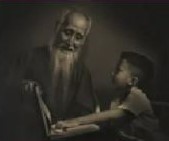
The devastation wrought by the war kindled in Yip a passion to record on film, his changing environs. He began taking photographs of the same site a few years apart; mostly around his beloved Kreta Ayer area, recording the changes that have taken place over the years. Yip was also much inspired by the vitality of the human spirit, and the ability of man to overcome hardships and setbacks. This can be seen in his photographs of people, especially his portraits of fisherfolk, samsui women and construction workers. The spirit of toil and endeavour shines through in each photograph. Yip felt deeply for the poor and the down-trodden in Chinatown. He explored every nook and corner of the area after the war and captured images of social activity of a time gone by. His ability to capture, what Henri Cartier-Bresson calls “the decisive moment” made him unique among the photographers of his generation.
Master Yip
Yip’s first success in photography was in 1952 when he began sending his prints for international competitions. A prudent man all his life, Yip processed and developed all his own black and white prints. His print, Rowing at Dawn, won for him a string of top prizes and gold medals in international salons and was exhibited in over 80 countries. Before long, Yip began winning other prizes and gained international recognition. In 1957, he was made Associate of the Royal Photographic Society, and four years later, Fellow of the same society. In Singapore, his photographic and technical skills earned him a job at Tien Wah Press in 1960. There, he was involved in commercial photography and also provided technical support and maintenance for the printing house’s machinery.
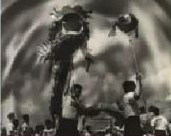
In 1974, Yip was made Honorary Fellow of the Singapore’s oldest photographic society, the Photographic Society of Singapore and in 1984, he was awarded the coveted Cultural Medallion. One of Yip’s highest honours was to be named one of 10 ‘Honorary Outstanding Photographers of the Century’ by the prestigious New York Photographic Society (NYPS) in 1980. At a special exhibition, Yip earned this distinction for his seascapes and four of his prints: Tranquility; Rowing at Dawn; Early Morning; and The First Cast which were exhibited alongside nine other photographers from Hong Kong, America, Poland, China, Argentina and Hungary. The citation of the NYPS stated that the honour was “… the world’s highest tribute to a photographer”.
From 1966 to 1974, Yip was Vice-President of the Photographic Society of Singapore and on 15 December 1978, he was conferred Honorary Life Membership of the Society. He also served as Advisor of the Kreta Ayer Community Centre Camera Club from 1976 till his death in 1989.
1903 Born in Hong Kong. Arrived in Singapore, aged 7 month.
1909 Sent back to China to be cared for by relatives as his mother had to work to upkeep the family as his father died in 1907.
1913 Returned to Singapore after his relatives’ neighbours discovered that he was not cared for and notified his mother. Lived with his mother at 47 Kreta Ayer Road. Educated at a private school in Chinatown.
1936 After working some time as a supervisor with United Engineers, Yip saved up enough money to buy a Rolleiflex camera.
1942 Quit United Engineers and started small engineering workshop at the back of his house. Also built a dark room.
1946 Continued operating engineering workshop. Branched into various other enterprises, including tin toy-making, joss-stick manufacturing and ground-tea powder shampoo.
1952 First major success at an international competition. Rowing at Dawn won him a string of top prizes and gold medals in international competitions. Accepted for exhibition in over 80 countries.
1957 Made Associate of the Royal Photographic Society, UK.
1960 Joined Tien Wah Press as commercial photographer and technician.
1961 Honorary Fellowship of the Royal Photographic Society, UK
1972 Honorary Excellence Distinction of the International Federation of Photographic Art (Seascape specialist)
1973 Retired from Tien Wah Press.
1974 Honorary Fellowship of the Photographic Society of Singapore
1978 Honorary Life Membership, Photographic Society of Singapore
1980 Honorary Outstanding Photographer of the Century, Photographic Society of New York
The Master Wears Slippers
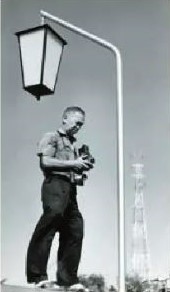
Despite his success, Yip remained a humble, self-effacing individual. Looking at him, sitting at his provision shop, no one could imagine that the old shopkeeper with a benign smile was one of the world’s great photographers. He was always willing to share his techniques with younger photographers and was regarded by all his colleagues as a perfect gentleman. Dressed in singlet, shorts and slippers, Yip enjoyed nothing more than waking up before dawn in search of a perfect picture.
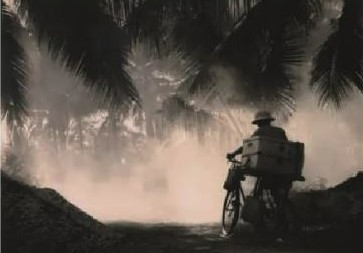
All his shots were carefully planned and executed. His deep understanding of lighting, and his uncanny ability to penetrate the soul of his subjects made him a true master. Yip was particularly fascinated by the sea and the old kampungs. In an interview published in 1986, he lamented the loss of kampungs to shoot in Singapore. When he could still drive, he and his fellow photographers would take trips up to peninsula Malaysia to capture the scenery and the fishermen at work.
In 1986, Yip was persuaded by his friends and family to publish a book of his works. The result was a privately funded book, Yip Cheong Fun’s Pictorial Collection, featuring 100 of his photographs from 1954 to 1986. It took him two years and $26,000 to publish. He had hoped that the book would serve as a record of his work and a good reference for young enthusiasts. Yip was an amateur throughout his photographic career. It was his way of sharing his deep love for Singapore and the people who made it their home. When he died in 1989, he was clutching a fully-loaded camera, a fitting end for a man whose love for photography was an all-consuming passion.
A bad workman blames his tools, but good tools in the hands of an expert can make all the difference between a mediocre photograph and a masterpiece. Yip Cheong Fun shot many of earlier photographs with his German-made Rolleiflex, a 6x6 camera that first appeared in 1929.
His next camera had an even bigger negative, the 6x9 Zeiss Super Ikonta-C. This camera is a classic legend and is one of the most unique cameras ever made. The beauty of this camera is its ability to be folded up into a very small package. It was a camera with the largest body-size to negative ratio in the market. These cameras were considered the best folding cameras ever made.
Yip’s last medium-format camera was a Swiss-made Hasselblad 500C, one of the finest cameras ever made. The 500C was introduced in 1957 and was a singlelens reflex camera with a German-made Carl Zeiss lens with built-in leaf shutters. This camera is renowned for its superb optics, reliability and compact size. For portability, Yip used two 35mm cameras, the Leicaflex and a Nikon F.
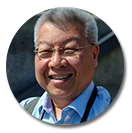
President
Singapore Heritage Society
FURTHER READINGS
On Photographers
Andre W.Keye, Chinatown: Different Exposures (Singapore: Fashion 21, 2004). (Call no. RSING 959.57 KEY)
Therese Lichtenstein, Master of Light: Ansel Adams and His Influences (New York: Todtric, 1997)
On Technique
Michael Freeman, Black and White ([s.n.]: Lewes, 2005)
On Antique/Vintage Cameras
Alec Pearlman, Rollei Manual: The Complete Book of Twin-lens Photography ([s.n.]: Fountain, 1960) (Call no. RUR 771.31 PEA)
Dennis Laney, Leica Collector’s Guide (Henfield: Hove Collectors Books, 2005). (Call no. RART q771.31075 LAN)
Fritz Henle, Fritz Henle’s Guide to Rollei Photography (New York: Studio Pub & Crowell, 1956). (Call no. RUR 791.3133 HEN)

